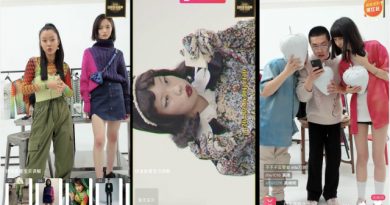Fleeting Shopping Behaviors and a Digital-First Holiday Season – WWD
According to the DTC Collective, a newly formed think tank conceived by Fayez Mohamood, cofounder and chief executive officer of the retail technology company Bluecore, retailers are unsure if new consumer behaviors are temporary or here to stay.
The DTC Collective includes retail leaders from companies such as Tapestry, QVC, Tamara Mellon, Lane Bryant, David’s Bridal, Estée Lauder, Jockey, Brooks Brothers and Eddie Bauer, among others.
“The original idea for the DTC Collective came out of a conversation a group of us were having regarding the trends accelerating retailers’ move to a direct-to-consumer approach: the increased rate at which consumers are adopting online shopping and traditional retails’ aggressive move into digital channels,” Mohamood said. “When the pandemic hit, we found ourselves in a predicament where the industry was changing again, but this time at the hands of something no one could control or predict. So, what we had originally conceived as this driving force for self-regulation of retail and the ushering in of a universal code of conduct that’s mutually beneficial to consumers and brands, has now shifted temporarily.”
According to Mohamood, it was important for a group of retail leaders to actively participate in shaping the trajectory of these changes before outside forces, such as another GDPR, CCPA or the eventual elimination of third-party cookies, took effect without retailers’ ability to influence the impact on businesses.
“In 2020, the DTC Collective’s mandate is to accelerate the rebound of the industry,” Mohamood said. “We’re doing this by coming together and openly sharing what, at any other time, would be considered behind-closed-doors strategies for dealing with the effects of the global pandemic, supply chain crisis and hard-hit economy.”
In light of the ongoing uncertainty, unpredictable store strategies and the mass migration to e-commerce, the collective found seven ways retailers can prepare for the digital-first holiday season. “There is a level of agility that comes from understanding that the fluctuations in consumer behavior will continue,” the authors said of the report. “The ability to operate and adapt to the unexpected introduces a foundation for growth that will thrive no matter what the state of the consumer.”
“The pandemic is creating a lot of ‘firsts’ for consumers: they’re buying from brands they’ve never tried before, they’re purchasing from platforms such as Instagram for the first time, and they’re adopting previous nice-to-haves, like curbside pickup, as must-haves,” Mohamood said. “Perhaps not surprisingly while stores are closed, we are also seeing an increase in online ‘window shopping’ or browsing with shoppers viewing more products, adding more products to their carts and signing up to receive e-mails from brands. These shoppers are on the edge of making a purchase.”
The seven strategies include retailing quarantine shoppers, adopting technology that moves at the speed of the consumers, testing more than ever before, getting creative about excess inventory to save margins, determining brand positioning on social responsibility, preparing for less consumer spending during the holidays and creating retail spaces that are experiential rather than commerce-focused.
According to data from Bluecore, apparel brands have seen up to a 142 percent year-over-year increase in first-time purchases and sports/outdoor brands have seen increases of up to 244 percent year-over-year, since March. The report notes that brands must prioritize technology investments to provide an experience that will turn new customers into loyalists. Notably, during this time, the authors say brands are forgoing typical processes in the technology search and onboarding technology that will quickly show significant returns.
“The trick will be to provide these digital experiences without sacrificing the bottom-line — any investment made or promotions offered should tie directly to driving revenue,” Mohamood said. “For example, ad spend or site pop-ups promoting such experiences can be focused on high-value audiences and not all shoppers should receive offers or discounts, because the reality is, they won’t all need a discount to buy. Targeting shoppers that take those preferences into consideration are key to maximizing revenue as brands offer more unique experiences.”
As authors of the report note, consumer behavior shows signs of fleeting visits, it is important to recognize which new customers have staying power.
“Many consumers are also buying from brands for a second time, which indicates that consumers are adopting new behaviors in what we are anticipating is a permanent shift to digital-first shopping,” Mohamood said.
Due to supply chain and inventory issues over the last several months retailers are also facing excess inventory as they enter the season. Instead of a typical offloading practice with discounts and other channel partners, the collective advises brands to “get creative” to abstain from sacrificing margins. To illustrate, the report notes brands using digital communications to create the appearance of scarcity, recommend products and surfacing discounts only to shoppers who need them to convert.
“Brands should accept that the digital-led consumer behaviors will continue and introduce plans that are fluid in nature,” Mohamood said. “This, coupled with a strong focus on retention and repeat business, will put brands on the path to a rebound. And although we are entering a digital-first world, the store will not disappear completely. Rather, brands need to rethink the value of the store from the ground up and balance the cost of running the store with its intended purpose and impact.”
For More WWD Business News:
COVID-19’s Anticipated Impacts on Holiday Spending
Nate Is Ready to Handle Your Mobile Checkouts
True Fit Shares Holiday Shopping Trends Analysis for 2020 Planning


:quality(70)/cloudfront-eu-central-1.images.arcpublishing.com/businessoffashion/EQAQ4LBJNBA6NMTYOHAVTPO5OY.jpg)


